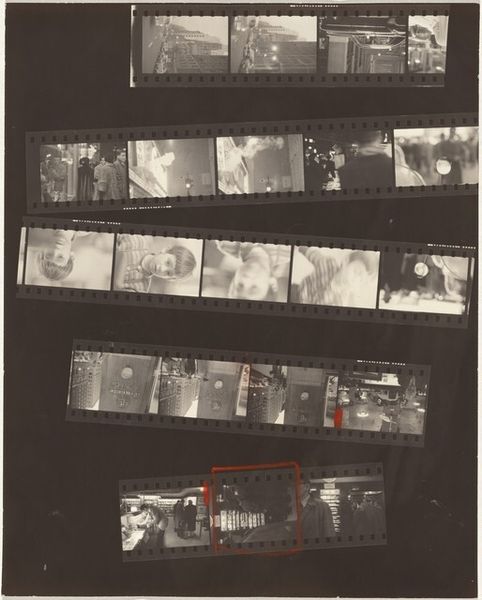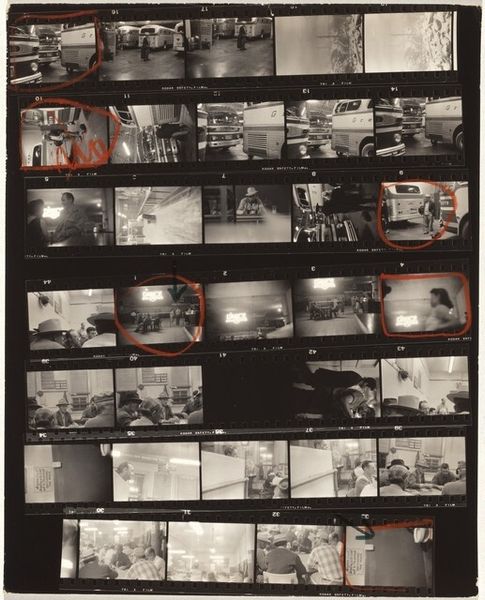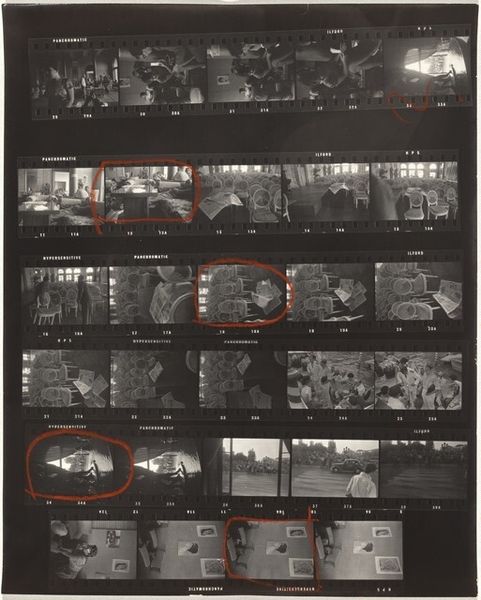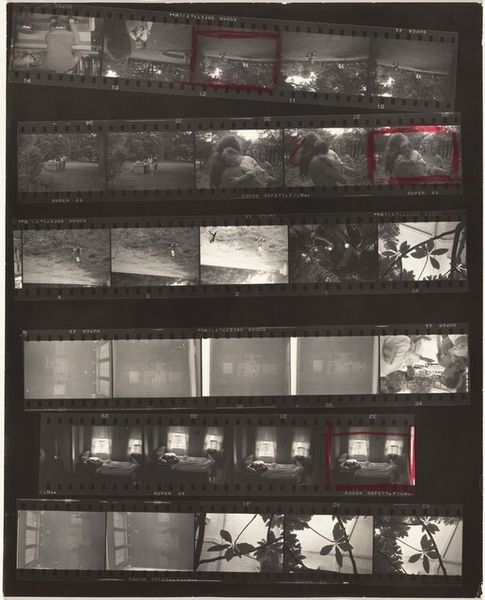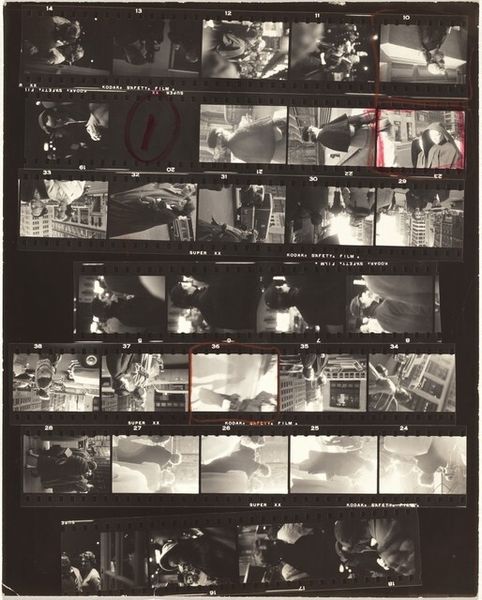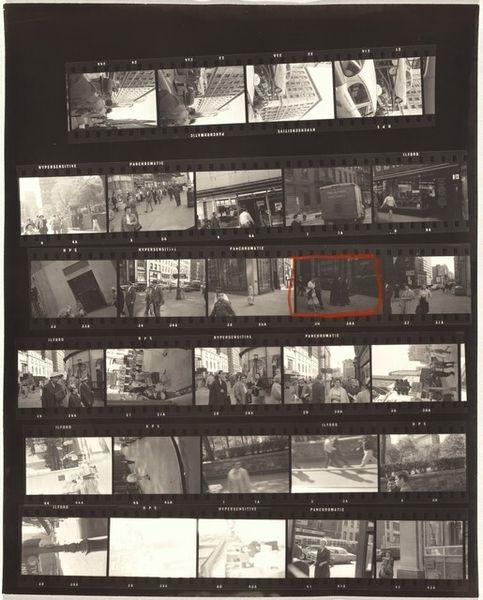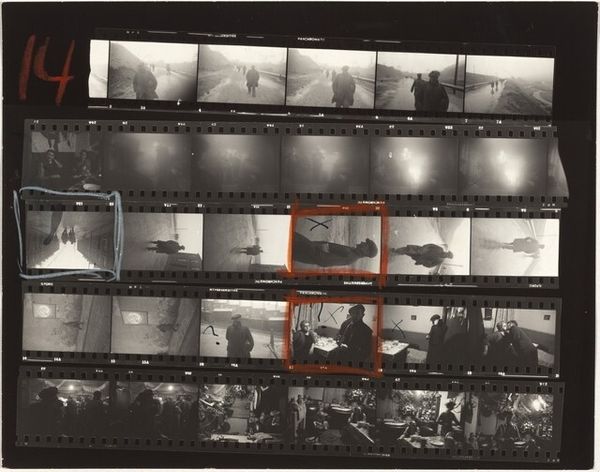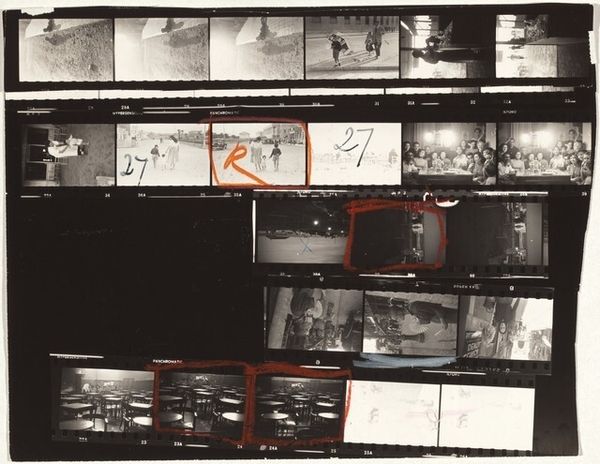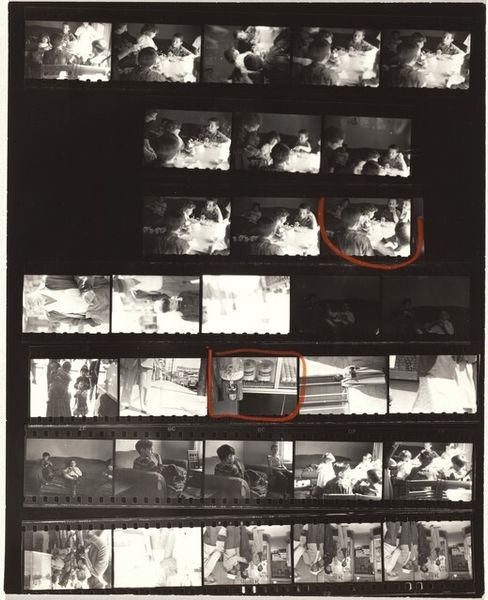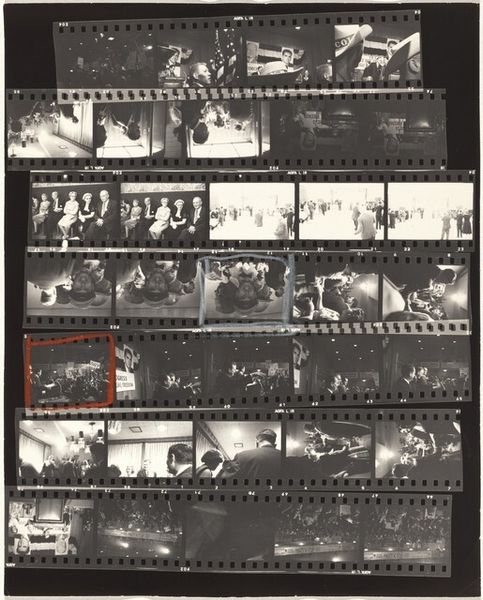
photography, gelatin-silver-print
#
street-photography
#
photography
#
gelatin-silver-print
#
modernism
#
realism
Dimensions: sheet: 25.2 x 20.2 cm (9 15/16 x 7 15/16 in.)
Copyright: National Gallery of Art: CC0 1.0
Editor: We’re looking at Robert Frank’s “New York City I,” a gelatin-silver print from around 1953 or 1954. It presents multiple strips of film, contact sheets maybe? They appear like visual notes from different parts of the city. What catches my attention is the raw materiality of the presentation, a stark contrast to traditional, polished photography. How do you interpret this work? Curator: The choice of the contact sheet *as* the finished artwork challenges established art hierarchies. Instead of presenting a singular, perfect image, Frank exposes the photographic process itself. We see the labor, the selection, the imperfections—all traditionally hidden in finished prints. Consider how the mass production of photographic film enables this kind of intimate urban observation. Editor: That’s interesting. It feels like he's deliberately showing us the unedited reality behind image-making. Is it a commentary on consumer culture too? Curator: Absolutely. Photography was becoming increasingly accessible, integrated into daily life and contributing to the deluge of visual information in the post-war era. Frank's work questions the truth claims of photographic images but more importantly it displays the labour intensive side to the glamour of visual production and media consumption.. What social factors may have played a part, here? Editor: The post-war boom in America, the rise of consumerism… were all those elements feeding his art practice? Curator: Precisely. The rise of commercial photography went hand in hand with industrial advancement. But photography democratized art forms because film became relatively cheap; every consumer suddenly had access to this way of expressing themselves. Frank subverts this process, to unveil it's basic elements. The finality is in exposing a kind of truth! Editor: I see. By highlighting the raw materials, he turns a commercial process into a deliberate, conceptual art statement, unveiling all its mechanics and challenging artistic traditions! Curator: Indeed, he's inviting us to reflect on how we create, consume, and understand images. What do you take away? Editor: I’ll think of Frank when considering the whole cycle of artmaking from raw material to end result; I really learned something today! Thanks for sharing such an insightful perspective.
Comments
No comments
Be the first to comment and join the conversation on the ultimate creative platform.

